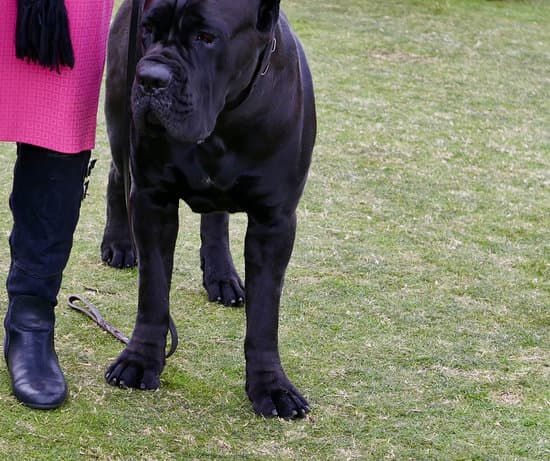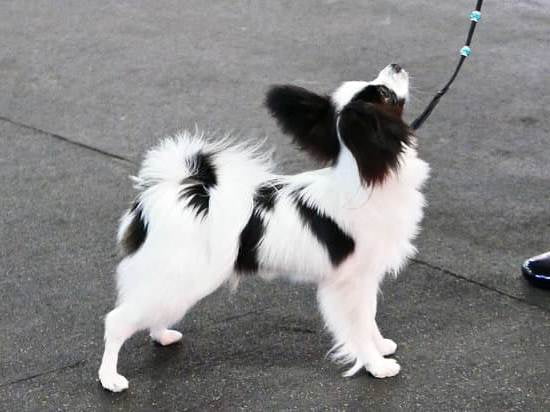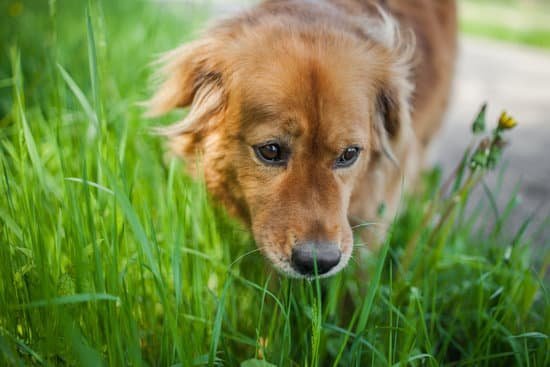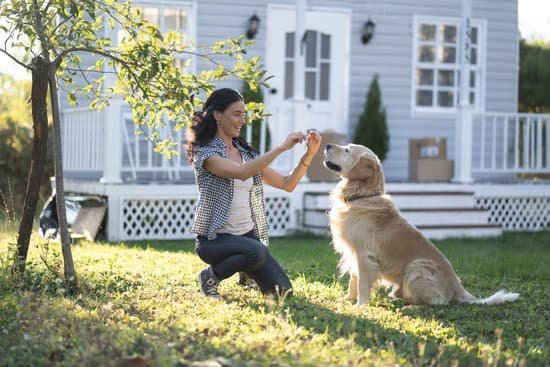Potty training is an essential aspect of responsible dog ownership. It not only helps to keep your living space clean and odor-free, but it also contributes to a healthy and flourishing relationship between you and your furry friend. The question of what age to potty train dogs is crucial in ensuring that the process is both effective and stress-free.
Understanding the developmental stage of your puppy is vital when it comes to addressing their potty training needs. Puppies go through various developmental stages, each with its own set of challenges and requirements. Knowing how these stages affect potty training can make a significant difference in your approach and expectations.
Recognizing the signs that your dog is ready for potty training is key to a successful experience. Every dog may present different cues that indicate their readiness for this important milestone. Being attuned to these signs will help you in determining the right time to start potty training, making the process smoother and more efficient overall.
Understanding the Puppy’s Developmental Stage
When it comes to potty training dogs, understanding the puppy’s developmental stage is crucial. Puppies go through various development stages, and each stage can affect their ability to grasp potty training. Here is an overview of the different developmental stages of puppies:
- Neonatal Stage: This stage occurs from birth to two weeks. Puppies are completely dependent on their mother and littermates for survival.
- Transitional Stage: From 2-4 weeks, puppies start to become more aware of their surroundings and begin to interact with their littermates.
- Socialization Stage: This stage occurs from 3-12 weeks and is a critical period in a puppy’s development. They learn important social skills and begin to explore the world around them.
- Juvenile Stage: From 3-6 months, puppies undergo rapid growth and start testing boundaries. This stage is also when they begin teething.
How the developmental stage affects potty training:
The developmental stage of a puppy can greatly impact their ability to be effectively potty trained. For example, very young puppies have limited bladder control and may not be physically capable of holding their urine for extended periods. Understanding the puppy’s developmental stage allows dog owners to set realistic expectations and adjust their potty training approach accordingly.
As a responsible dog owner, it is essential to be knowledgeable about your puppy’s developmental stages and understand how they can influence your potty training efforts. Each stage presents its own challenges as well as opportunities for successful potty training, so being aware of these stages can ultimately lead to a more efficient process.
Signs That Your Dog Is Ready for Potty Training
Common Signs That Indicate a Dog Is Ready for Potty Training
One of the first signs that your dog is ready for potty training is when they start to show awareness of their bathroom needs. This could include sniffing around, circling, or suddenly stopping in the middle of play or activity. Additionally, if your dog starts to whine or bark at the door to indicate they need to go outside, this is a clear sign that they are starting to understand the concept of potty training.
How to Recognize These Signs in Your Own Dog
Every dog is different, so it’s important for pet owners to pay close attention to their pet’s behavior and habits. Keep an eye out for any changes in their normal routine and take note of any signals they may be giving when they need to go potty. It’s also crucial for owners to establish consistent times for taking their dogs outside, such as after meals and before bedtime, in order to better observe these potential signals.
Setting Realistic Expectations
It’s important for dog owners to set realistic expectations when it comes to potty training. While some dogs may catch on quickly and show clear signs of readiness early on, others may take longer or exhibit more subtle indications.
Being patient and understanding with your pet during this transitional period can make the process smoother and more successful for both you and your furry companion. Recognizing these signs and patiently working through them will help pave the way for effective potty training and a closer bond between owner and dog.
Best Practices for Potty Training
Potty training a dog can be a challenging process, but with the right techniques and consistent effort, it can be successfully accomplished. Here are some best practices for potty training that can help you and your furry friend establish a routine and eliminate accidents in the house.
Step-by-Step Guide
When embarking on potty training, it’s important to establish a routine for your dog. Take your dog outside first thing in the morning, after meals, and before bedtime to encourage regular bathroom breaks. When your dog eliminates outside, be sure to offer praise and rewards to reinforce this behavior. It’s also important to monitor your dog for signs that they need to eliminate and take them outside immediately when you notice these signs.
Tips for Consistency
Consistency is key when it comes to potty training. Be patient with your dog and keep a close eye on them during the training process. If accidents occur inside the house, it’s important not to scold or punish your dog as this can create anxiety or confusion. Instead, clean up the accident without drawing attention to it and continue with the training process.
In addition, using verbal cues such as “go potty” or “do your business” when taking your dog outside can help them understand what is expected of them. Over time, they will associate these verbal cues with the action of eliminating outside.
Potty Training Tools
There are also various tools available that can aid in the potty training process such as puppy pads or artificial grass patches for indoor use. These tools can be especially helpful during the early stages of potty training or for dogs who live in high-rise buildings or areas where outdoor access is limited. However, it’s important to gradually transition your dog from using these tools indoors to exclusively going outside as they progress in their training.
Crate Training and Its Role in Potty Training
Crate training can be an effective tool in potty training your dog. The principle behind crate training is that dogs naturally avoid soiling their living space, and by confining them to a crate, you can encourage them to hold their bladder and bowels until they are let outside. It is important to note that the crate should not be used as a form of punishment, but rather as a safe and comfortable space for your dog to rest in.
When using a crate for potty training, it is essential to choose the right size crate for your dog. The crate should be just large enough for the dog to stand up, turn around, and lie down comfortably. This will discourage the dog from soiling the crate while also allowing them enough space to move around.
To make the crate a positive experience for your dog, it is essential to associate it with positive things such as treats, toys, and praise. Gradually accustom your dog to the crate by leaving the door open and allowing them to explore it at their own pace. Once they are comfortable, start closing the door for short periods while you are present, gradually increasing the time as they become more accustomed to being in the crate.
Using a consistent schedule and routine with the crate will help your dog understand when it is time for potty breaks. Take them outside immediately after letting them out of the crate, and provide plenty of opportunities for them to relieve themselves in designated areas. With patience and consistency, using a crate as part of your potty training approach can lead to successful results in teaching your dog good bathroom habits.
Common Potty Training Challenges and How to Overcome Them
Potty training a dog can be a challenging process, and many dog owners encounter common obstacles along the way. One of the most prevalent challenges is dealing with accidents inside the house. It’s important to remember that accidents are a normal part of the potty training process, especially for young puppies.
Patience and consistency are key in overcoming this challenge. It’s also essential to avoid punishing your dog for accidents as this can create fear and anxiety, making the potty training process even more difficult.
Another common challenge during potty training is teaching dogs to communicate their need to go outside. Some dogs may have difficulty expressing when they need to relieve themselves, leading to accidents indoors. To overcome this challenge, it’s helpful to pay close attention to your dog’s behavior and cues.
Look for signs such as restlessness, sniffing around, circling in one spot, or heading towards the door. Once you recognize these signals, immediately take your dog outside to the designated potty area.
Additionally, some dogs may develop a preference for eliminating in specific areas of the house, making it difficult to encourage them to use the designated outdoor space. To tackle this challenge, focus on cleaning and deodorizing indoor accident spots thoroughly using an enzymatic cleaner. At the same time, make the outdoor potty area more attractive by spending time there with your dog and using positive reinforcement when they eliminate in that space.
| Common Potty Training Challenges | Strategies to Overcome Them |
|---|---|
| Dealing with accidents inside the house | Patience and consistency; avoiding punishment for accidents |
| Teaching dogs to communicate their need to go outside | Observing dog behavior for cues; immediate outdoor trips upon recognizing signals |
| Preference for eliminating in specific indoor areas | Thoroughly clean indoor accident spots; make outdoor area attractive through positive reinforcement |
Mistakes to Avoid During Potty Training
Potty training a dog can be a challenging task, and many dog owners make common mistakes that can hinder the process. One of the most common mistakes is not being consistent with the training. Dogs thrive on routine, so it’s essential to take your dog outside to their designated potty area at the same times each day. Inconsistency can confuse your dog and make it harder for them to understand where they are supposed to go.
Another mistake is punishing your dog for accidents. Accidents will happen during the potty training process, and it’s important not to scold or punish your dog when they occur. Punishment can create fear and anxiety in your dog, making them less likely to understand and follow the potty training process.
Additionally, using the wrong cleaning products to clean up accidents can also be a mistake. When accidents happen, it’s crucial to clean up thoroughly with an enzymatic cleaner designed specifically for pet messes. Regular household cleaners may not completely eliminate the odor, which can lead your dog to continue eliminating in the same spot.
| Common Mistakes | Tips to Avoid Mistakes |
|---|---|
| Not being consistent with training | Set a schedule and stick to it for taking your dog outside. |
| Punishing your dog for accidents | Refrain from scolding or punishing your dog when accidents happen. |
| Using regular household cleaners for accidents | Use enzymatic cleaners designed specifically for pet messes. |
Potty Training for Adult Dogs
Potty training isn’t just for puppies – it’s also an important process for adult dogs. Whether you’ve adopted an older dog who wasn’t properly trained, or your previously potty-trained dog is having accidents, it’s never too late to work on potty training. Here are some tips and strategies for successfully potty training adult dogs:
- Reinforce Basic Training: Before starting potty training, ensure that your adult dog has a solid foundation in basic obedience commands. This will make the training process much smoother.
- Establish a Routine: Just like with puppies, establishing a consistent routine is crucial for adult dogs. Take your dog out to the same spot at regular intervals, especially after meals, naps, and playtime.
- Use Positive Reinforcement: Reward your adult dog with praise, treats, or playtime when they eliminate in the appropriate spot. Positive reinforcement will help them understand what behavior is desirable.
Potty training an adult dog may take longer than training a puppy, but with patience and consistency, it can be accomplished. Avoid punishing your dog for accidents and instead focus on rewarding good behavior. With time and effort, you can have a happy, potty-trained adult dog.
Conclusion
In conclusion, potty training is a crucial aspect of caring for a dog and can significantly enhance the bond between owner and pet. Understanding the developmental stages of puppies and recognizing the signs that indicate readiness for potty training are essential steps in this process. Additionally, creating a consistent routine and utilizing crate training can greatly aid in effectively potty training a dog.
It’s important for dog owners to be aware of common challenges encountered during potty training, such as accidents in the house or resistance from the dog. By being patient and employing strategies to overcome these challenges, successful potty training can be achieved. Furthermore, avoiding common mistakes and being mindful of the specific needs of adult dogs are key factors in ensuring the effectiveness of the potty training process.
Ultimately, successfully potty training a dog is a cause for celebration. A well-trained dog not only contributes to a cleaner and more pleasant living environment but also demonstrates the dedication and care provided by the owner. By being patient, consistent, and understanding throughout the process, dog owners can reap the rewards of having a happy, well-adjusted, and potty-trained companion.
Frequently Asked Questions
At What Age Are Dogs Easiest to Potty Train?
Dogs are generally easiest to potty train between the ages of 12 to 16 weeks. This is the age range when they are more receptive to learning and can start understanding basic commands. It is also a crucial time in their development when they are more able to control their bladder and bowel movements.
Can an 8 Week Old Puppy Be Potty Trained?
Yes, an 8 week old puppy can definitely be potty trained, but it will require consistent effort and patience from the owner. At 8 weeks, puppies are still very young and their bladder control is not fully developed yet.
However, with regular bathroom breaks, positive reinforcement, and crate training, it is possible to start the potty training process at this age.
What Age Should Dogs Be Potty Trained?
Dogs should ideally be potty trained as early as possible in their life, preferably before they reach six months of age. By this time, most dogs have better control over their bodily functions and have a better understanding of basic obedience.
Starting potty training early also establishes good habits that will benefit both the dog and the owner in the long run.

Welcome to the blog! I am a professional dog trainer and have been working with dogs for many years. In this blog, I will be discussing various topics related to dog training, including tips, tricks, and advice. I hope you find this information helpful and informative. Thanks for reading!





